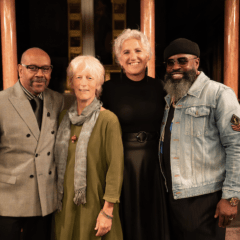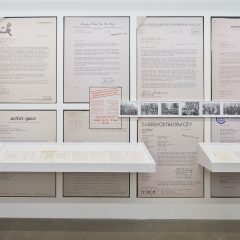The centerpiece of Sarah McEneaney’s fifth exhibition at Tibor de Nagy, Studio Living, is titled “ACT with Me (AB),” in which we find Sarah napping on a couch at home surrounded by her vigilant dog and cats–Angel, Cole, and Trixie (thus, ACT). AB is for “after Balthus” because Sarah’s pose in the painting is based upon the Balthus painting “Sleeping Girl,” in which a beautiful young woman is portrayed peacefully sleeping on a bed with one of her breasts exposed. In McEneaney’s painting, by contrast, the artist depicts herself as peaceful, but drained, and her mastectomy scar and small blue radiation tattoos are exposed.
Paintings revealing personality
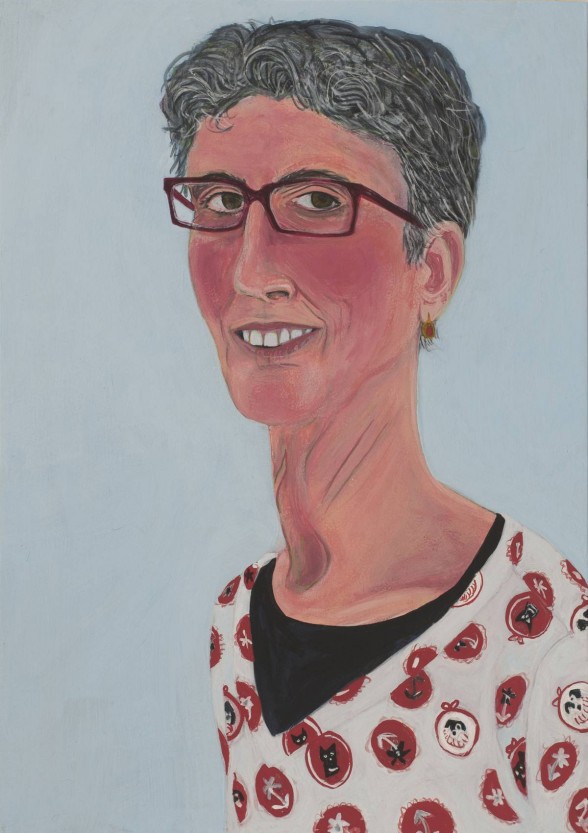
Balthus (Balthasar Klossowski) was a Polish-French Modernist known, among other things, for insisting that the observer of his work should be spared any biographical details about the artist. Whether or not one agrees with this edict, McEneaney’s highly personal paintings, which beg various questions about her, must be seen to be appreciated; indeed, they must be seen up close, where they magnetically pull you into their orbit.
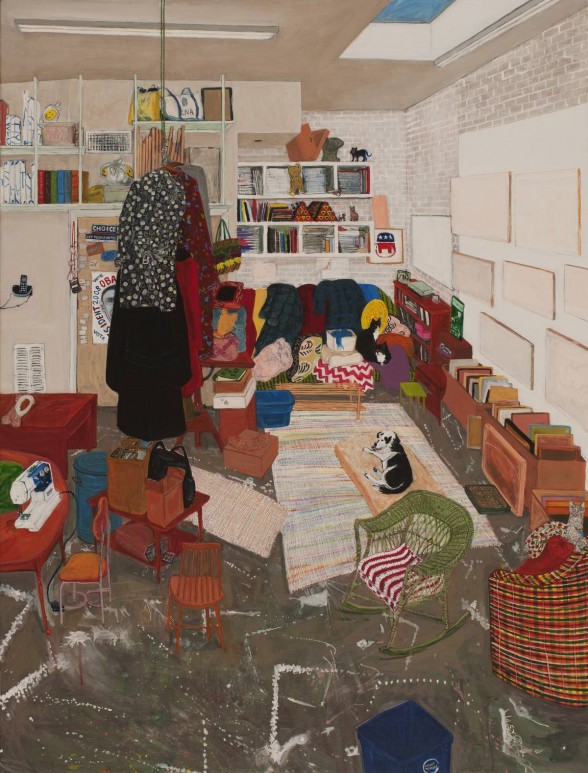
Life from a distance
“Studio Living” presents 17 egg tempera and acrylic paintings completed over the last two years, depicting scenes from the artist’s dreams; her home and studio; her Joan Mitchell residency in New Orleans; and visits to Dr. Wilkinson’s Hot Springs Resort in Calistoga, California, to the Turrell exhibit at the Guggenheim and to Shelter Island.
These are paintings of McEneaney’s personal experiences of and in the world. In her own words: “They describe and retell life experience, physically, using people, animals, and objects in both interior and exterior spaces. I paint looking out from within and back inside from my particular place in the world. My aim is to be honest and straightforward in the subject matter I choose and in how I paint it; to make the personal universal.”
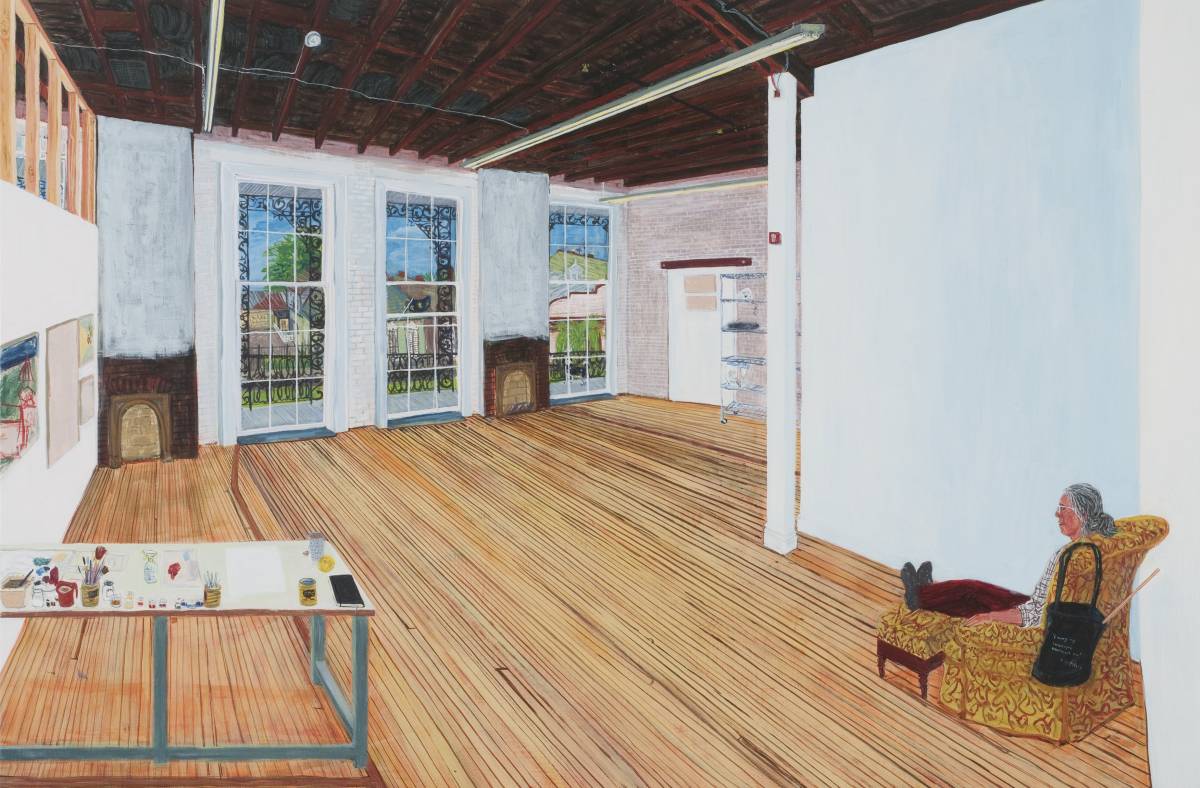
McEneaney’s paintings rarely are populated with beings other than herself and her animals, and when others do appear, they often seem like doubles of the artist. McEneaney’s spaces often are deserted, undisturbed by human meddling. From a distance, what looks like a cluttered studio or living space is neat and organized up-close–almost unlived-in. Yet each space is filled with a richness of physical detail that is strikingly beautiful and inviting. McEneaney’s animals have souls, and her self-portraits are blunt and self-effacing, suggesting a story that you might feel uncomfortable to hear.
I wrote a story once about a woman taking a bath and ruminating on her life: a reverie about connection and disconnection. Similarly, a woman walks through all of McEneaney’s paintings. She stands before a camera or a mirror. She is alone with her animals and sleeps and dreams about dog beaches. She is immersed in a white-tiled mud bath with cucumber slices covering her eyes, with an indistinguishable, almost identical figure in an identical bath beside her. She bathes in a cradle-shaped tub resting luminously but translucently underwater. McEneaney’s animals keep her company, watch over her, and peer into the indistinct world outside. One wonders whether McEneaney keeps other souls at a distance, and why.
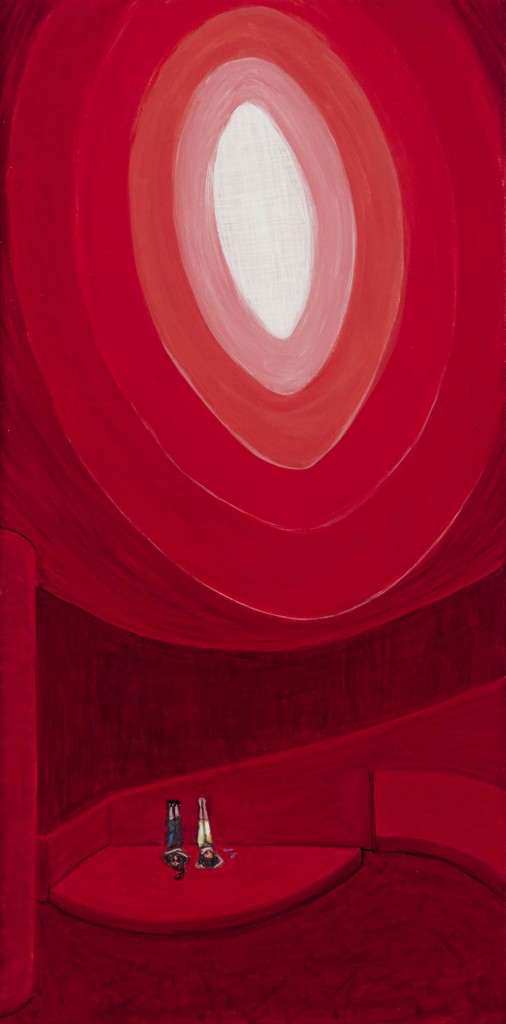
An outlier in the exhibition is McEneaney’s Sanskrit-titled “Urdhva Prasarita Padasana,” in which two Lilliputian figures take the L-shaped yoga posture (backs on the floor, legs at 90 degrees up against the wall) in what could be a huge auditorium of various satin reds beneath a vortex of white light. I immediately thought of Turrell (having had the privilege years ago to visit the Roden Crater), and learned later that the painting was inspired by a visit to his Guggenheim exhibition, apparently by one of his Skyspaces.
In McEneaney’s world, there is a warmth to the cold, Turrellian, awe-inspiring experience of universal light, which is created by the yoga pose in which the subjugant has a friend. The two lie on their backs and reach out to the heavens.
Depth and detail
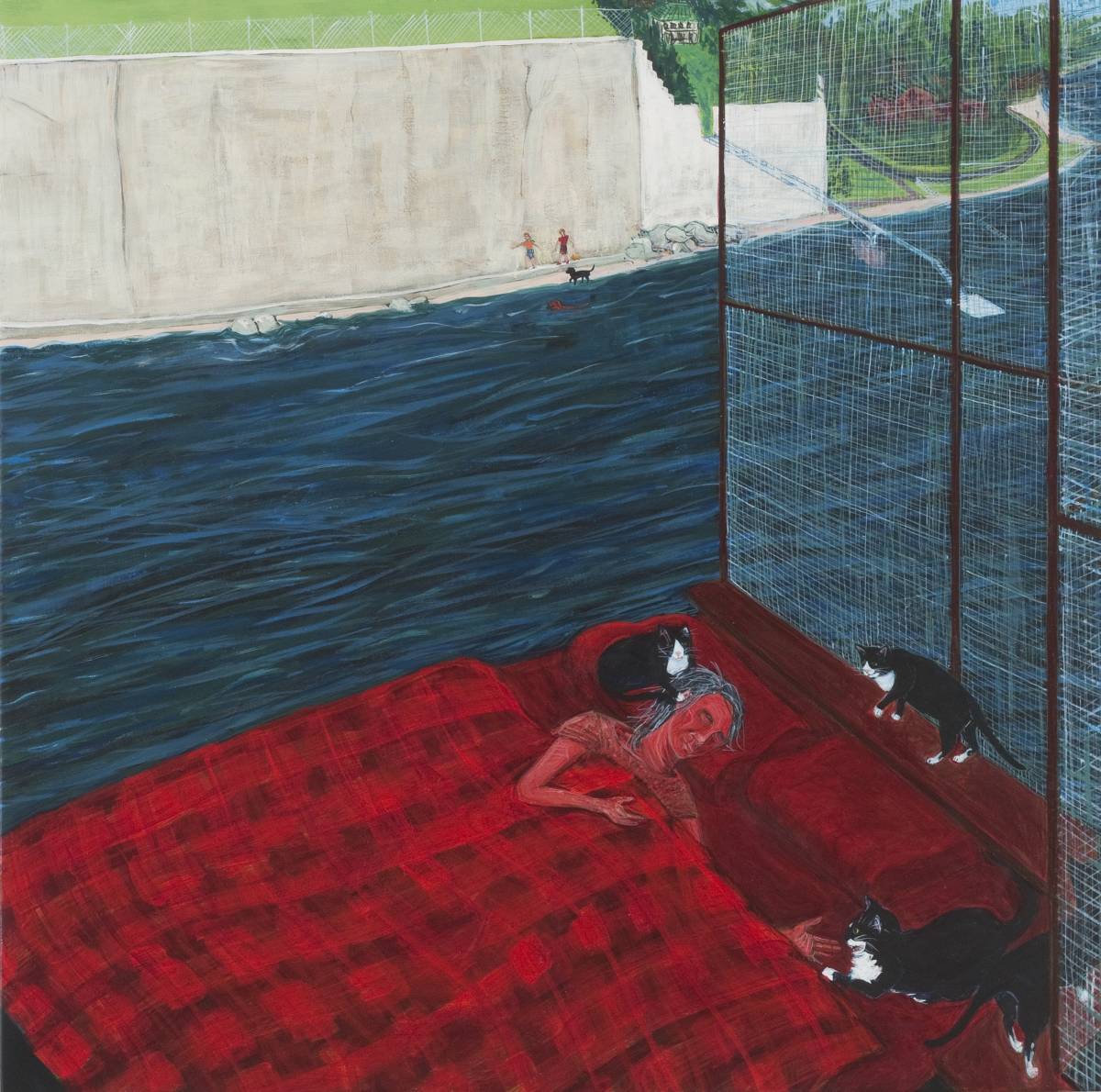
A word about the beautiful and inviting physical detail found in McEneaney’s paintings. The floor in her Rampart Street studio in New Orleans; the screen behind her bed in her dog beach dream; the hammock on Shelter Island. Cats’ eyes. One could go on and on: stucco townhouses with lacy ironwork façades, ceilings, bricks, fabrics, fences, rugs. All are rendered with an exquisite, sometimes glorious richness that contrasts with a world of more banal detail: a smoke detector, recycling bins, a sewing machine, an Obama poster.
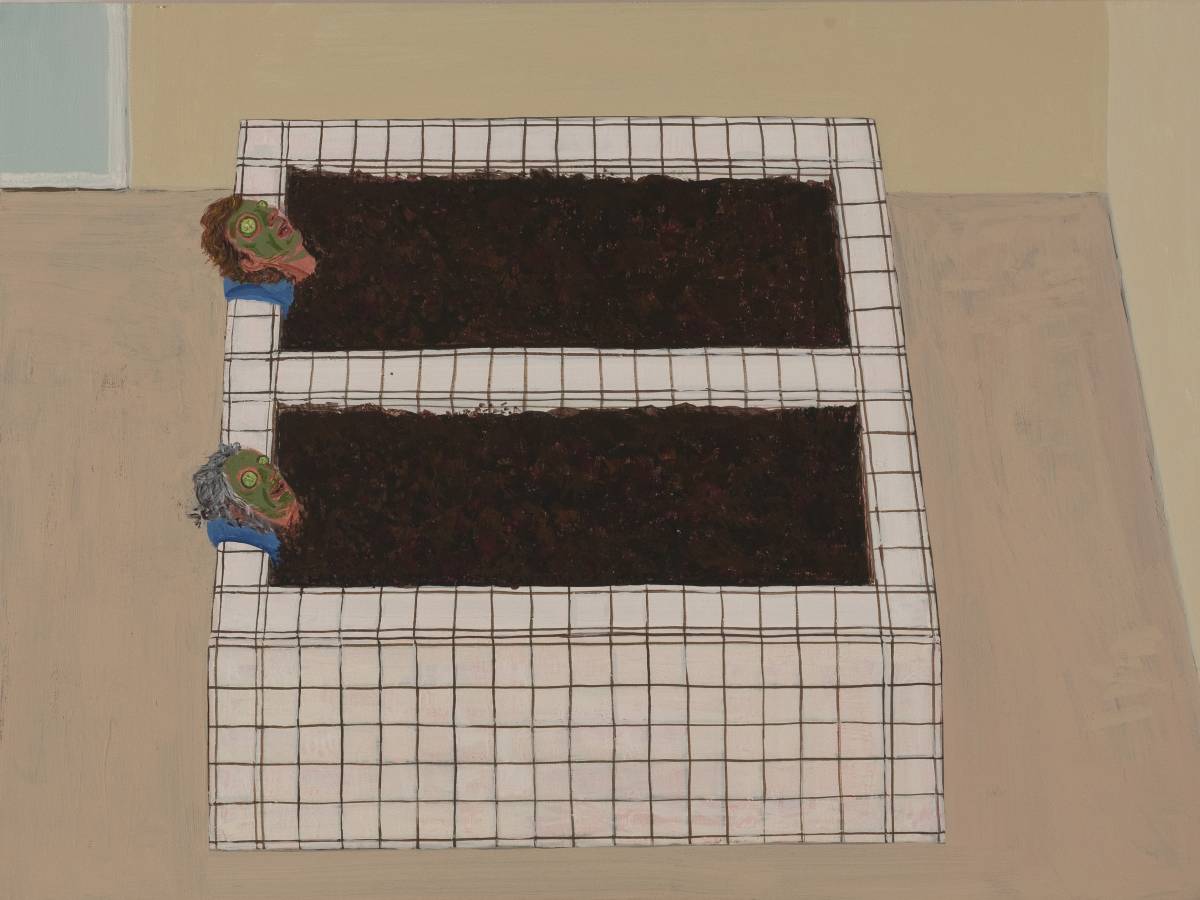
McEneaney often paints from a 45-degree angle, which is panoramic without distorting the scales of everyday life and ultimately adds to the great invitingness of her work. The narrator is not omniscient, and we learn about her not only from what is portrayed in her work, but also from what is missing. She is one of us. She welcomes us to share in her intriguing perspectives upon the self and upon the world, and this may be as close as you get to actually experiencing another person’s life.
Studio Living is on display at Tibor de Nagy Gallery, 724 Fifth Ave., New York, NY, Oct. 16 – Nov. 22, 2014.
Michael Lieberman is an art lover and the gallery owner and director of Hooloon Gallery in Philadelphia.



